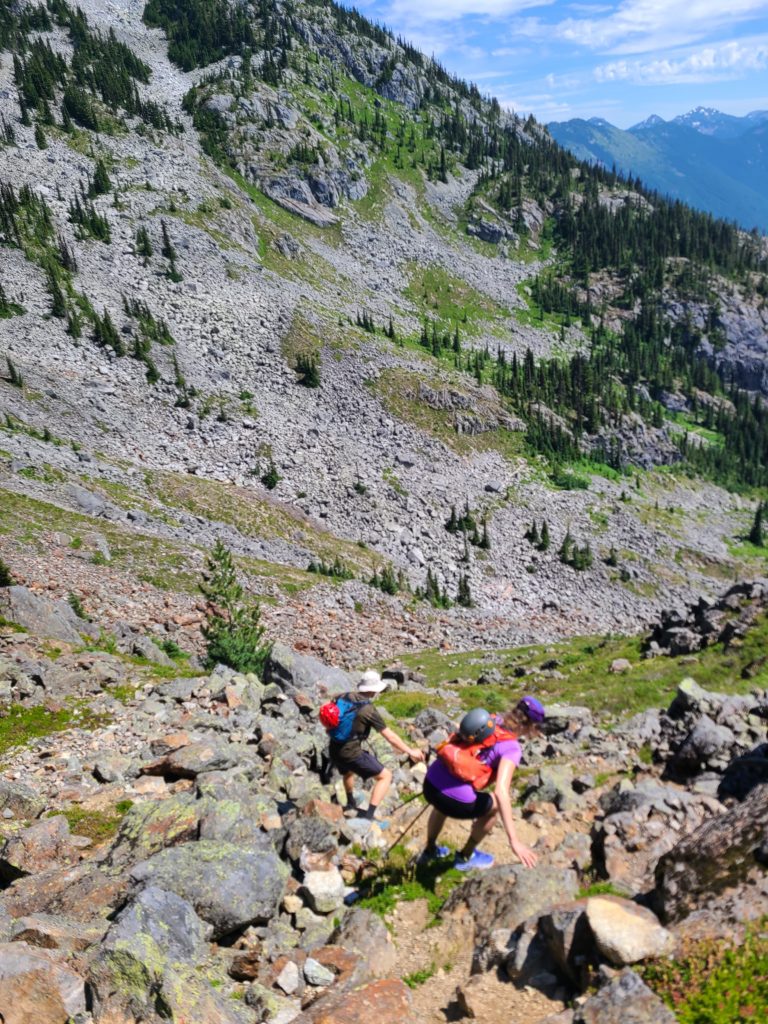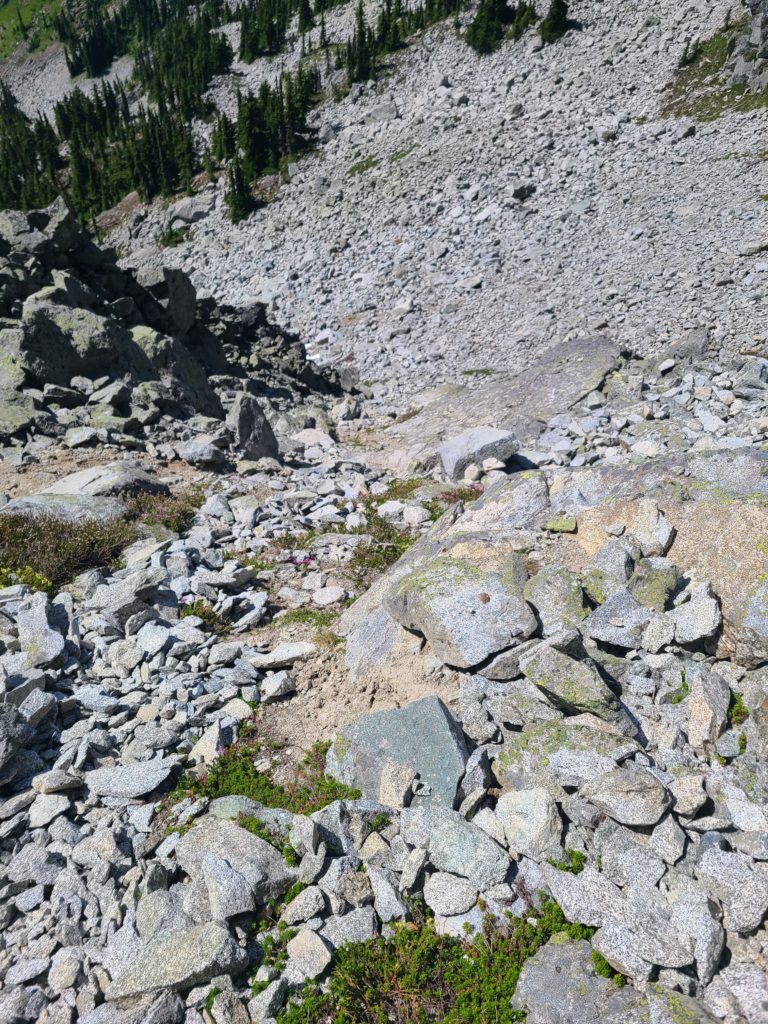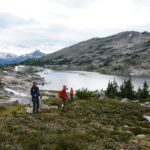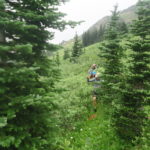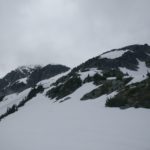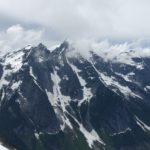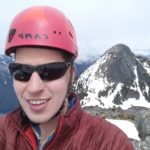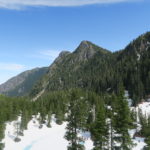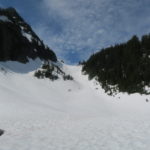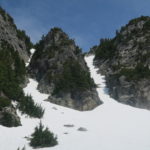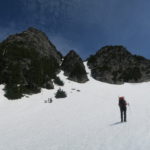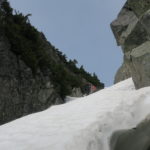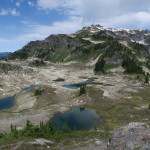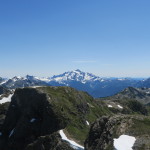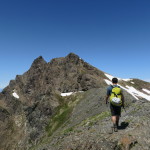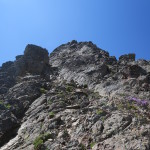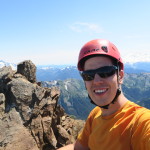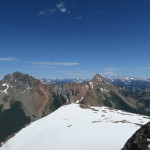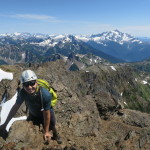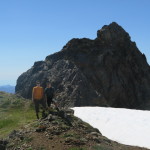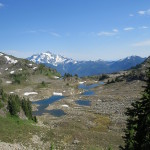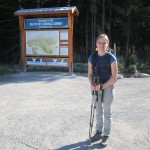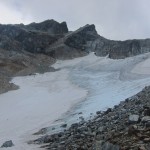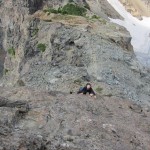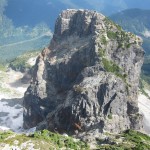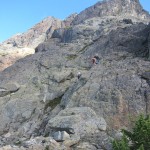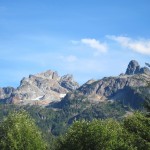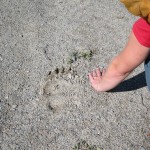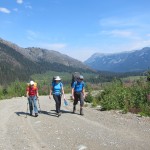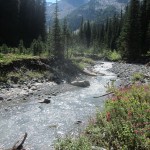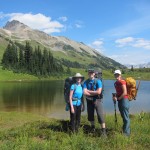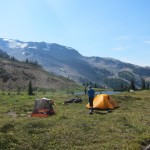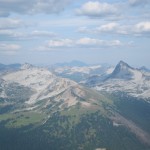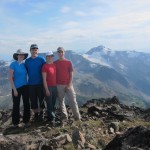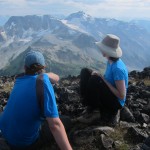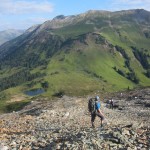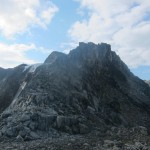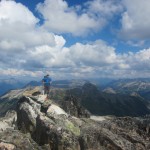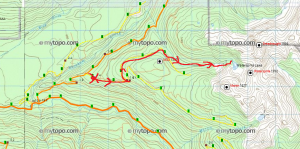Williams Peak
Date: Aug 1, 2022
Participants: Nancy Zenger, Jeff Wallace, Geoff Zenger
Difficulty: 3 (very steep heather, some rock scrambling)
Report: Not to be confused with the Williams Peak above Bralorne that I climbed a decade ago, we decided to make the best of a hot long weekend day to make our way to the prominent Williams Peak in the Chilliwack Valley. It’s summit pyramid is unmissable as you drive towards Chilliwack Lake but somehow I’d never managed to make an attempt on it now, probably due to the massive elevation gain serving as a ready deterrent. Nonetheless…
We set out from our car shortly before 10 and slogged our way up the steep trail and through the heat up to the ridge, which we reached in about 1:45. The heat made it feel slow, but someone had done some very recent trailwork and the trail is in excellent condition up to the ridge. Luckily the heat stayed down in the valley and we experienced much more reasonable temperatures higher up, though with the tradeoff. that there were a lot of bugs about in the forest.
The trail along the ridge hadn’t seen recent work and was somewhat bushy in places, though never bad, and we quickly made our way up to the viewpoint at the end of the ridge, reaching it in just over an hour. Here we had lunch and decided on our route down and across the bowl towards the summit pyramid.
We began our descent into the bowl at 1:15, going straight down the obvious gully down to where there was a fairly obvious ledge heading to the left. From here we contoured across the bowl, following occasional flagging, and despite reports that it was an endless boulder-fest, actually found that the boulders weren’t bad at all and were able to do much of the traverse and ascent through the little heather and shrub forests that adorn the bowl.
At the far end of the bowl is a nasty loose rock and boulder filled gully that Gunn calls a ramp. It is very loose with few solid holds, and at one point we reached a short section with almost nothing to hang on to and where everything was moving under us. Jeff made his way through it, but Nancy and I were sketched out and after losing a lot of time to indecision, I eventually elected to not proceed and rather to descent.
I started back down the ramp, and about 30 seconds into my descent decided that I should check out the heather slopes to climber’s left of the ramp. Sure enough, they are easy to walk up to the top and then traverse over to the top of the ramp. Approximately 3 minutes after giving up on the ramp and starting my descent I found myself safely on top of the ramp looking down on the others.
Long story short, don’t bother with the loose gully / ramp. Go up the heather to its left and skip the whole excitement.
On top of the ramp at about 2:45 we stopped for a quick snack then worked our way around to the south of the pyramid where there is an obvious massive heather gully that leads right to the summit. The gully has no technical difficulty and only needs hands in a few short sections, but man is it steep. There are steps in the dirt in the most part from people who came before, and so it is no problem for the sure footed, but I know many people who would have zero interest or desire to make their way up and down the gully due to the steepness. That said, it is direct, and we were on the beautiful summit at 3:25pm. Perfect temperature and clear views all around!
We began our descent a few minutes before 4pm, were down below the ramp at 4:35, across the bowl and back at the ridge viewpoint at 5:10, at the junction of the ridge trail where the real descent begins at about 6:15, and down at the car at about 7:50 with no damage done except for a badly blistered toe from the descent.
Total elevation gain was somewhere between 1,700m and 2,000m depending on whose trackers we trust, 17.8km and a total round trip time (including breaks) of nearly 10 hours. A big day, but big views! Thank you for the adventure!

